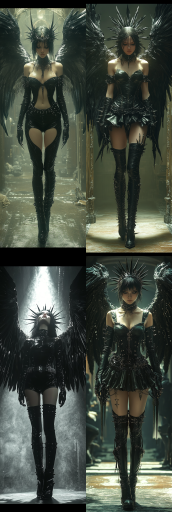Explore the Best AI Image Gallery

The Role of AI in Image Creation: Redefining Design and Creativity
Artificial intelligence (AI) has rapidly evolved, leading to significant changes across various industries, particularly in design and visual arts. The ability of AI to generate images has sparked a revolution, altering how designers conceptualize, create, and execute their ideas. In this blog post, we will explore the impact of AI-generated images on the creative industry, discuss potential applications, ethical considerations, and future trends that may emerge as a result.
The Impact of AI on the Creative Industry
AI's influence on the creative industry is profound. Traditional design processes often require a significant investment of time and resources. However, with the advent of AI image generation tools, designers can create high-quality visuals in a fraction of that time. Tools like DALL-E, Midjourney, and Artbreeder allow artists to generate unique images using simple prompts, facilitating unprecedented creative freedom.
Moreover, AI can analyze vast amounts of data to generate images based on popular trends, preferences, or historical context. This can assist designers in catering to the audience's tastes more effectively. For instance, in marketing, brands can use AI to create targeted visuals that resonate with specific demographics, enhancing engagement and conversion rates.
Potential Uses of AI-Generated Images
The applications of AI-generated images are diverse and continually expanding. Here are some notable uses within the design field:
- Product Design: AI can help in conceptualizing new products by generating images based on existing designs and consumer feedback.
- Advertising: Marketers can utilize AI to create tailored advertisements and promotional materials that align with current market trends and consumer preferences.
- Game Design: In the gaming industry, AI-generated imagery can streamline the creation of game environments, characters, and assets, allowing developers to focus more on story and gameplay.
- Fine Art: Artists can use AI-generated images as inspiration or as a baseline to create their own unique artworks, pushing the boundaries of traditional art forms.
- Content Creation: Writers and content creators can generate visually engaging materials for blogs, social media, and presentations, enhancing their storytelling through captivating imagery.
Ethical Considerations
While the advantages of AI in image creation are apparent, ethical concerns must be addressed. One prominent issue is copyright infringement. As AI models are trained on existing images, the question arises: who owns the rights to the images generated? This ambiguity poses challenges in protecting original artwork and may lead to potential misuse.
Additionally, AI systems must ensure they do not perpetuate stereotypes or biases present in their training data. It's crucial for developers to be mindful of the impact their models can have on societal norms and representations within their generated content.
Moreover, the potential for AI to replace human artists raises concerns about job displacement in the creative sector. While AI can augment human creativity, it’s essential to strike a balance where technology supports rather than supplants the human touch in the arts.
Future Trends in AI-Generated Images
Looking ahead, we can anticipate several trends in the integration of AI-generated images within the design landscape:
- Increased Collaboration: We will likely see a continuation of human-AI collaboration, where artists use AI tools to enhance their creativity and streamline their processes.
- Personalization: As AI evolves, the ability to generate hyper-personalized images will expand, allowing brands and creators to produce content that is uniquely tailored to individual preferences.
- Regulatory Frameworks: As the ethical implications of AI-generated content become clearer, we can expect the emergence of laws and regulations governing the use of AI in creative fields to protect creators and consumers alike.
- Improved Technology: Advancements in AI technology will lead to more sophisticated image generation tools, increasing the quality and versatility of AI-generated visuals.
- Democratization of Art: As AI tools become more accessible, a wider array of individuals will be able to create high-quality visuals, potentially leading to a surge in diverse expressions within the art world.
Conclusion
The integration of AI-generated images in the design industry marks a significant milestone in the creative process. While the technology holds immense potential for enhancement and efficiency, navigating the ethical landscape will be vital for a sustainable future in the realm of creativity. As we look toward the future, collaboration between human creativity and AI capabilities will redefine how art and design are approached, creating exciting possibilities for the industry as a whole.